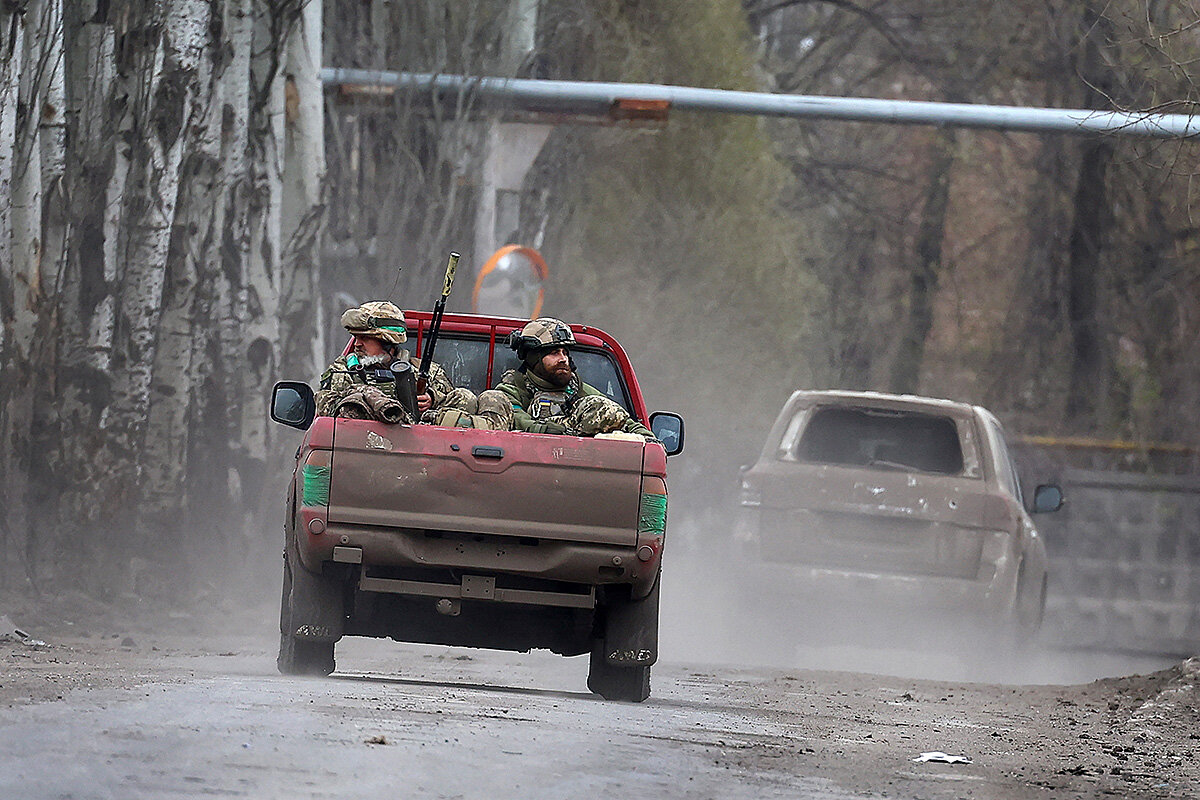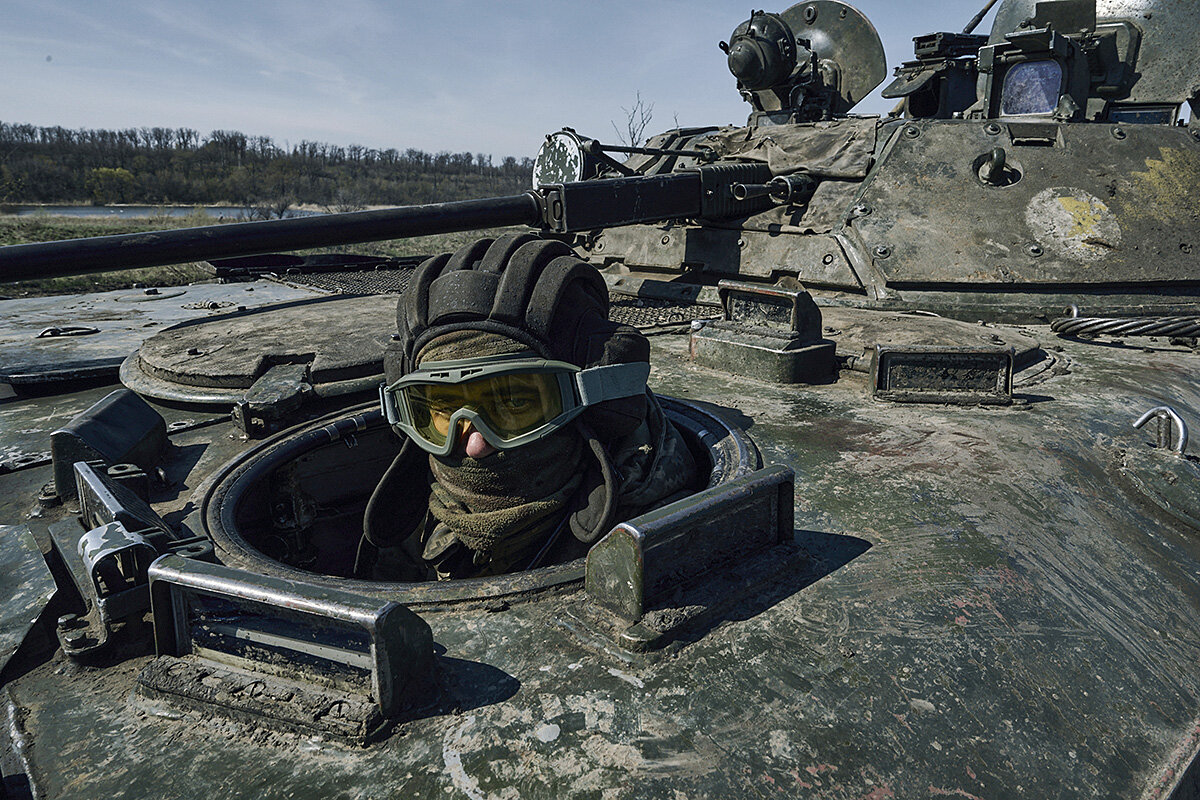How strong is US-Ukraine wartime alliance? What the leaks reveal.
Loading...
The extraordinary cache of recent and highly sensitive U.S. intelligence documents that have appeared these last weeks on social media sites and gaming chatrooms – largely focused on military and diplomatic aspects of the war in Ukraine – includes revelations on friend and foe alike.
In the “foe” column, the leaks include precise and timely details of Russian war planning and suggest deep U.S. penetration into Russian decision-making centers, from the Kremlin to the mercenary Wagner Group.
But then there are the friends – and in particular, Ukraine.
Why We Wrote This
A story focused onLeaked U.S. intelligence documents indicate close coordination between Washington and Kyiv in the latter’s war with Russia, but there are limits. Experts point to Ukraine’s innate distrust of great powers, even friendly ones. The leaks won’t help.
The documents – about 100 pages of what appear to be photocopied (and sometimes altered) intelligence briefings and “secret” reports – also offer a window into the U.S.-Ukraine relationship that has been forged by more than a year of war.
And not just any war, but one that has morphed into the front lines of what President Joe Biden and his administration portray as a defining battle between democracy, national sovereignty, and the rule of international law on the one hand, and autocracy, outside domination, and the rule of the strongest on the other.
Amid such high international stakes, the leaked documents underscore a relationship of significant cooperation – especially notable considering the relatively short period of time over which the intense relations have developed.
For example, some of the leaked information suggests how U.S. assistance has moved well beyond simply providing crucial modern weaponry to advising the Ukrainians – sometimes on a daily basis based on sophisticated satellite imagery – on the optimal targeting of Russian forces and repositioning of Ukrainian forces to evade planned Russian attacks.
But mixed in with that impressive degree of cooperation is also a fair dose of mutual wariness – exemplified on the U.S. side by leaked revelations that Washington spies on Ukrainian President Volodymyr Zelenskyy. That “news” drew grumblings and professions of disappointment from Kyiv, but analysts and some U.S. officials say no one should be surprised that the United States is managing its full-bore commitment to Ukraine on the basis of “trust but verify.”
Ukraine’s continuing wariness toward Washington – exemplified by what some U.S. officials describe as a frustrating opaqueness among some Ukrainian officials – has less to do with the U.S. specifically and more to do with a long and difficult national experience with outside powers, regional analysts say.
“It’s not about mistrusting the Americans; it has to do with Ukrainian history and a very strong sense that they cannot be dependent upon some outside hegemon – even a good hegemon,” says Matthew Schmidt, a political scientist with expertise in Russia and Ukraine at the University of New Haven in Connecticut.
What Dr. Schmidt says he’s learned from his time in Ukraine both before and during the war, including recently, is that “the Ukrainian government has never trusted the U.S.” with running the war and internal affairs for them, “and they are never going to,” he says.
“They’ve always been very careful to keep the final decisions – and the real questions they are asking themselves – to themselves,” he adds. “They say, ‘We need this and that weapons system from you to win this, but in the end we have to depend on our own counsel.’”
“Close to the vest”
That perspective is widely shared by analysts who have experience beyond the Ukraine-Russia theater to other conflicts pitting an expansionist regional power against a smaller state.
“Ukraine, like any country facing a mortal threat, is being very careful about the numbers they release and the planning they share beyond very tight circles,” says Rajan Menon, director of the Grand Strategy Program at Defense Priorities, a Washington think tank promoting realist principles and focusing on core U.S. national security interests. “They’re keeping quiet and playing very close to the vest.”
The leaked documents are particularly galling to Kyiv coming when they do – as Ukraine prepares its crucial spring counteroffensive against Russian positions inside the country. Moreover, they appear to reveal a significantly more depleted Ukrainian military than Kyiv has acknowledged.
Kyiv has been particularly tight-lipped on its own casualty figures. One document that appears to have been crudely altered to boost Western estimates of Ukrainian casualties and slash those suffered by Russia has been cited by both pro-Russian and pro-Ukrainian bloggers as evidence of a disinformation campaign. Another document, from late February, projects the depletion of munitions for Ukraine’s air defense systems by early May – when a spring counteroffensive would presumably be well underway.
Officials in Kyiv have already altered plans for upcoming military operations as a result of the leaked information, according to some reports. And given the timing, that is not surprising, analysts say.
“So much is riding on the success of this offensive,” says Mr. Menon. “The West is looking for not just Russian failures but Ukrainian successes – and the Ukrainians are very well aware of this.”
Given the very high stakes involved, he says it should surprise no one – even or perhaps especially in Washington – that officials in Kyiv are probably even more secretive now about their plans.
“If I were in the Ukrainians’ place I would be just as careful about revealing sensitive information, no matter who the recipient is,” says Mr. Menon, who will have an essay on the implications of Ukraine’s counteroffensive in the upcoming edition of Foreign Affairs magazine. “It’s not a question of mistrust of the U.S. It’s a reflection of how defense planners operate.”
Pressures on Ukraine
Some worry, however, that officials in Kyiv will react to the leaks – and perhaps the fear that more damaging revelations could be coming – by acting precipitously. It’s just one reason the State Department has launched a global effort to reassure allies over the revelations, including what some officials say is Washington’s assessment that no more leaks are likely to be forthcoming.
“The Ukrainians are under a lot of pressure to finish the war this year,” says Dr. Schmidt, the political scientist, pointing to among other things the political pressures the Biden administration and other Western supporters are facing at home to ratchet down their military and economic support to Ukraine.
“That puts extra pressure on choosing the right time and place for the offensive,” he says. “But if the revelations of their risk points prompt them to be less methodical about their choices, that could be disastrous.”
Dr. Schmidt says that for all the pressure the Ukrainian government is feeling from Washington and other Western allies, of at least equal weight is the “public pressure” internally to move beyond what is perceived as the stalemate that set in with Russia over the winter – as exemplified by the battle for Bakhmut – to tide-turning gains soon.
Indeed, a leaked assessment of fighting in Ukraine’s Donbas region from late February concludes that a stalemate setting in there is likely to “thwart” Moscow’s goal “to capture the entire region in 2023.”
That assessment is now being born out, Dr. Schmidt says, adding that it may have been Ukraine’s aim beginning months ago.
“The strategy seems to be to fight Russia to a stalemate in the Donbas, fix their position there – commit them to that spot – and unleash a totally different style of warfare ... elsewhere,” he says.
What might that be? Dr. Schmidt points to the anticipated deployment of 10 or more fresh brigades coming off of what NATO refers to as “combined arms maneuver” training – or what he describes as “training to fight with more equipment, less manpower.”
An offensive with as many as 50,000 fresh and well-trained troops going up against the mostly poorly or untrained fighters on the other side could be decisive, he says.
And while the timing might remain a closely held secret by a country that has learned to depend most of all on its own counsel, the elements that will make up the offensive – the varied weaponry, the trained troops – will unavoidably be the result of deep cooperation with (and indeed material dependence on) the U.S. and other Western supporters.









